Abduzeedo means abducted in portuguese, the spelling is not exactly that, it should be abduzido. But the whole idea for the Abduzeedo's design is the space. I'm really fan of playing with this subject because we are sort of free to create whatever we want, and using Photoshop that really means everything.
So in this Photoshop tutorial I will show you how to create a space scene with some nice Lighting Effects in 10 Steps.
Step 1
Create a new document, I'm using my computer screen's resolution
(1440x900 pixels) so I can use it as a wallpaper later. Add a new Layer and fill it with any color then go to
Layer>Layer Styles> Gradient Overlay. You can add a gradient layer as well, I simply prefer the Layer Styles.
Step 2 - Retro Colors
Create a new layer and fill it with white, then go to
Filter>Render>Lighting Effects. Change the style to
RGB lights. Use
Negative 60 for the Intensity, Narrow 96 for the focus, and for the other options keep the same.
Step 3
Lets add some blur, go to
Filter>Blur>Gaussian Blur. Use
80 pixels for the Radius. The last thing here will be change the
Blend Mode to Overlay. Doing that the RGB color will be hardly visible but later on with the other layers it will work ;)
Step 4 - Creating Stars
Creating Stars in Photoshop is something really easy. Create a new layer, fill it with black, and change the
Blend Mode to Screen. After that go to
Filter>Noise>Add Noise. Use
10% for the
Amount, Gaussian for the
Distribution and select
Monochromatic. You will have a layer full of noise, then to create the start just change the levels of the layer, go to
Image>Adjustment>Levels. For the
Input Levels use 65, 1.00, 99. Doing that you will increase the black so just the bigger dots will appear, also you will increase the white, making the dots that appear brighter.
Step 5 - Nebula
Now that we have the stars and the colors and some colors lets create the Nebula. To do that
create a new layer and go to
Filter>Render>Clouds. Make sure that your color were
black and white for the background and foreground. Then just add some
Layer Styles to do that go to
Layer>Layer Style. First over the
Blending Options, change the
Blend Mode to Overlay. After that select
Gradient Overlay. use
Overlay for the Blend Mode and for the
colors use a
Cyan, Green, Yellow, and Red. Also change the
Angle to 130º and the
Scale to 49%. Step 6 - Lens flare
First, lets
create a new layer and
fill it with black, however, this time, add this layer in front of the background and beneath the other layers: (Stars and Nebula). Now go to
Filter>Render>Lens Flare. This effect might be the most overused ever, like some people even say that using it you wil turn your design in an amateur piece. For me it's a nice filter and, if you use it right, it will give a nice touch to your image. For the settings use 1
00% Brightness and use
105mm Prime for the
Lens Type. Step 7 - Rays of Light
Now lets create the "A" of ray of lights. So
create a new layer in front of the Lens Flare. Then select the
Rectangular Marquee Tool (M) and create a rectangular selection like half of the height of the document. Use the image below for reference. After that select the
Brush Tool (B). We will use a very big brush,
800px diameter and hardness 0%. Select
white for the color and with just like a a bit of the brush inside the marquee (red circle) give a few clicks on the mouse button.
Step 8
Now it's just about duplicating, resizing and rotating. The tip here is convert the original ray of light layer to
Smart Objects, so you will be able to resize and rotate in a non-destructive way. After you create the
"A", change the blend mode of the elements to
Screen and use
80% opacity. Step 9 - Adjustments
Now lets just adjust some opacities, change the the
RGB light opacity to 80% and you can move the gradient overlay to test different color combinations as well.
Conclusion
In this tutorial we've learned how to create a very cool light effect that we often see is some of the NoPattern designs. Of course this tutorial was just an example and now you can improve it and apply it to your needs.

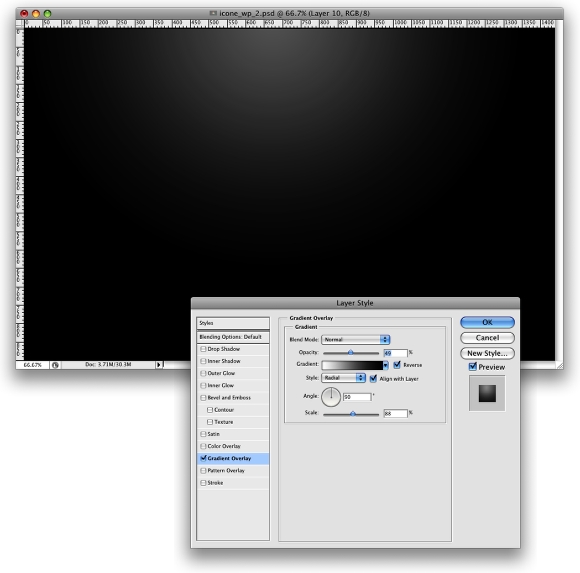
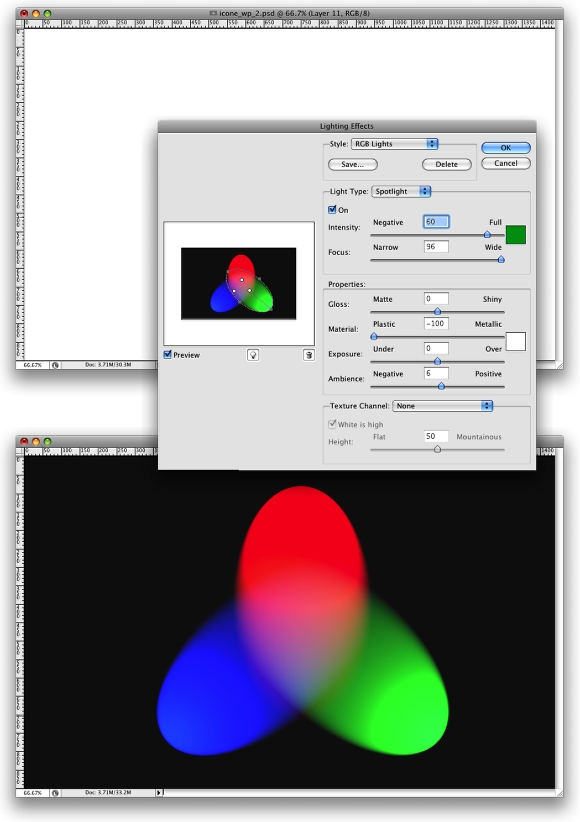
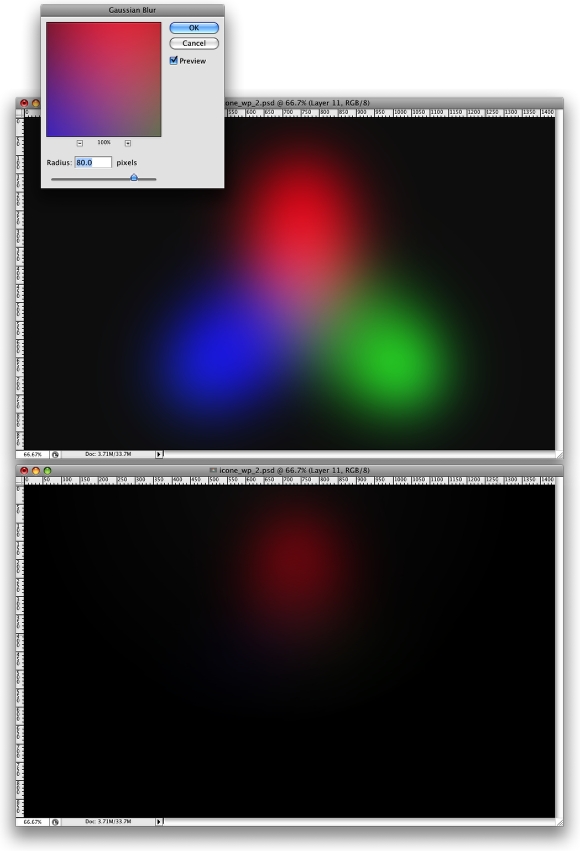
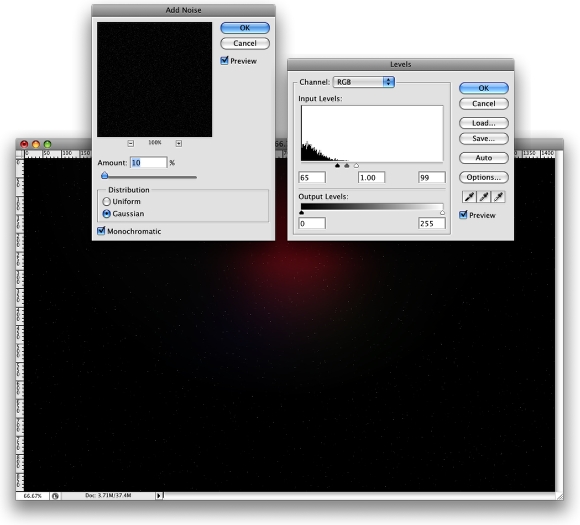

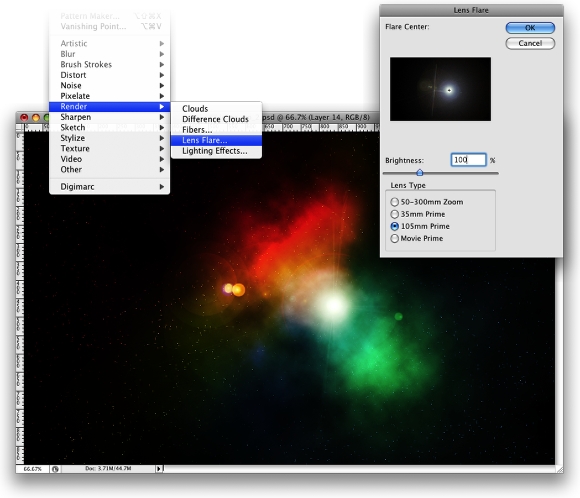
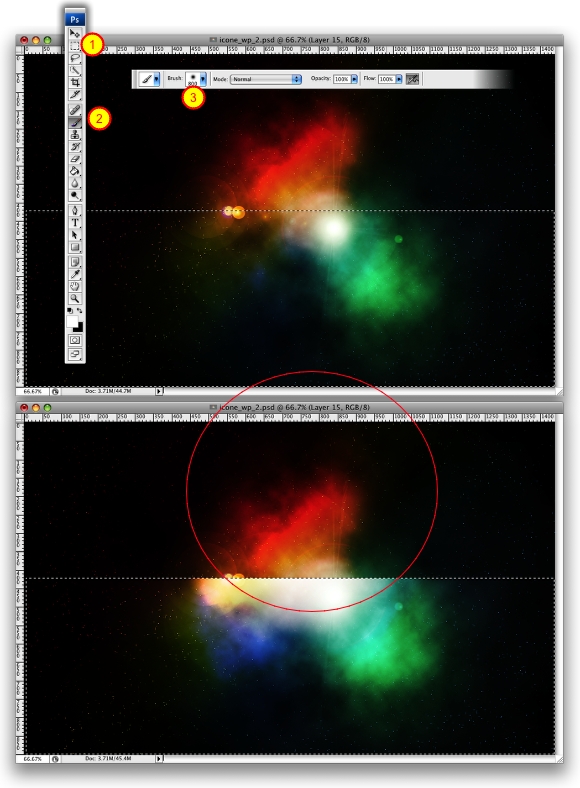
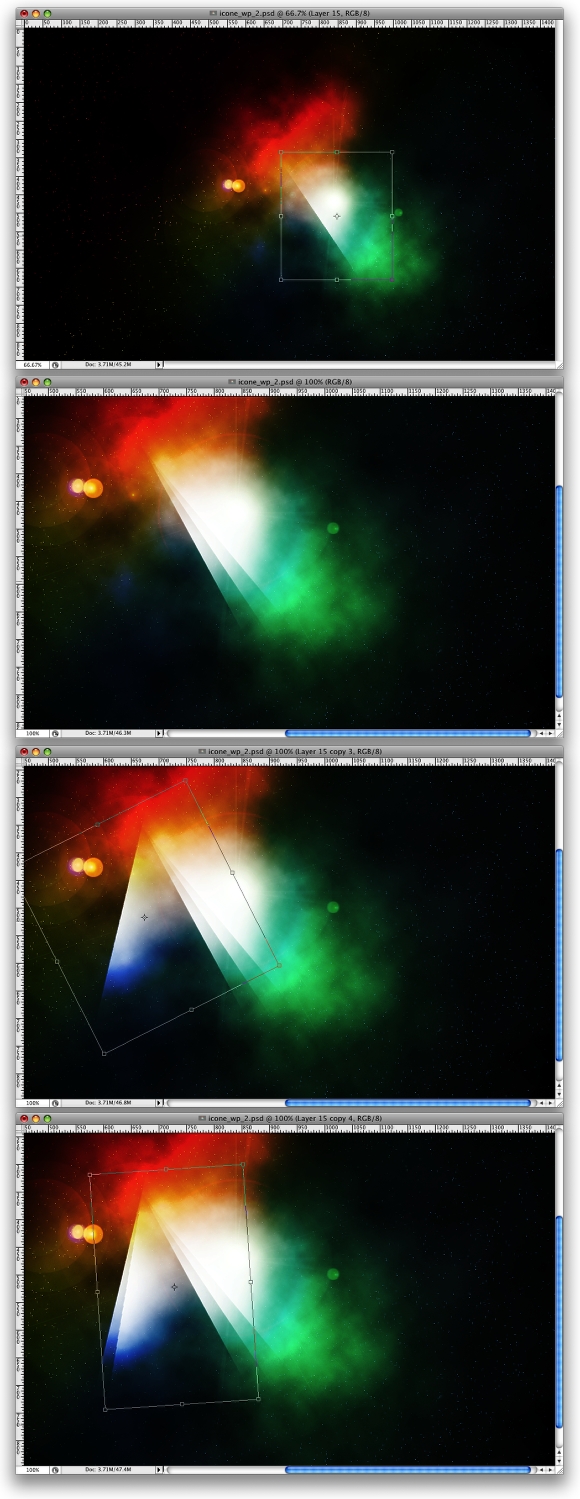
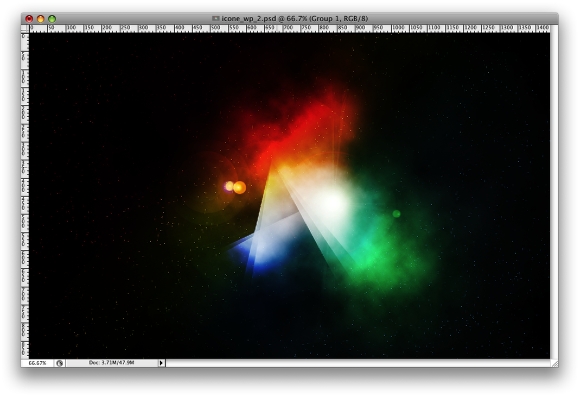
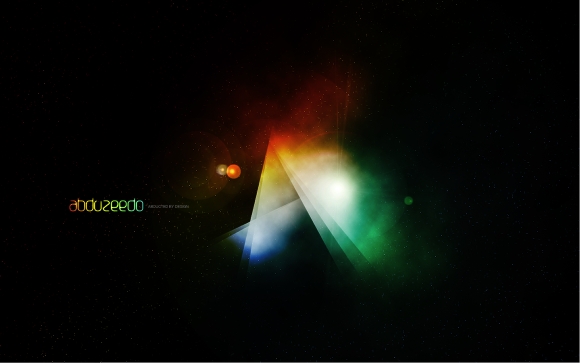






No comments:
Post a Comment